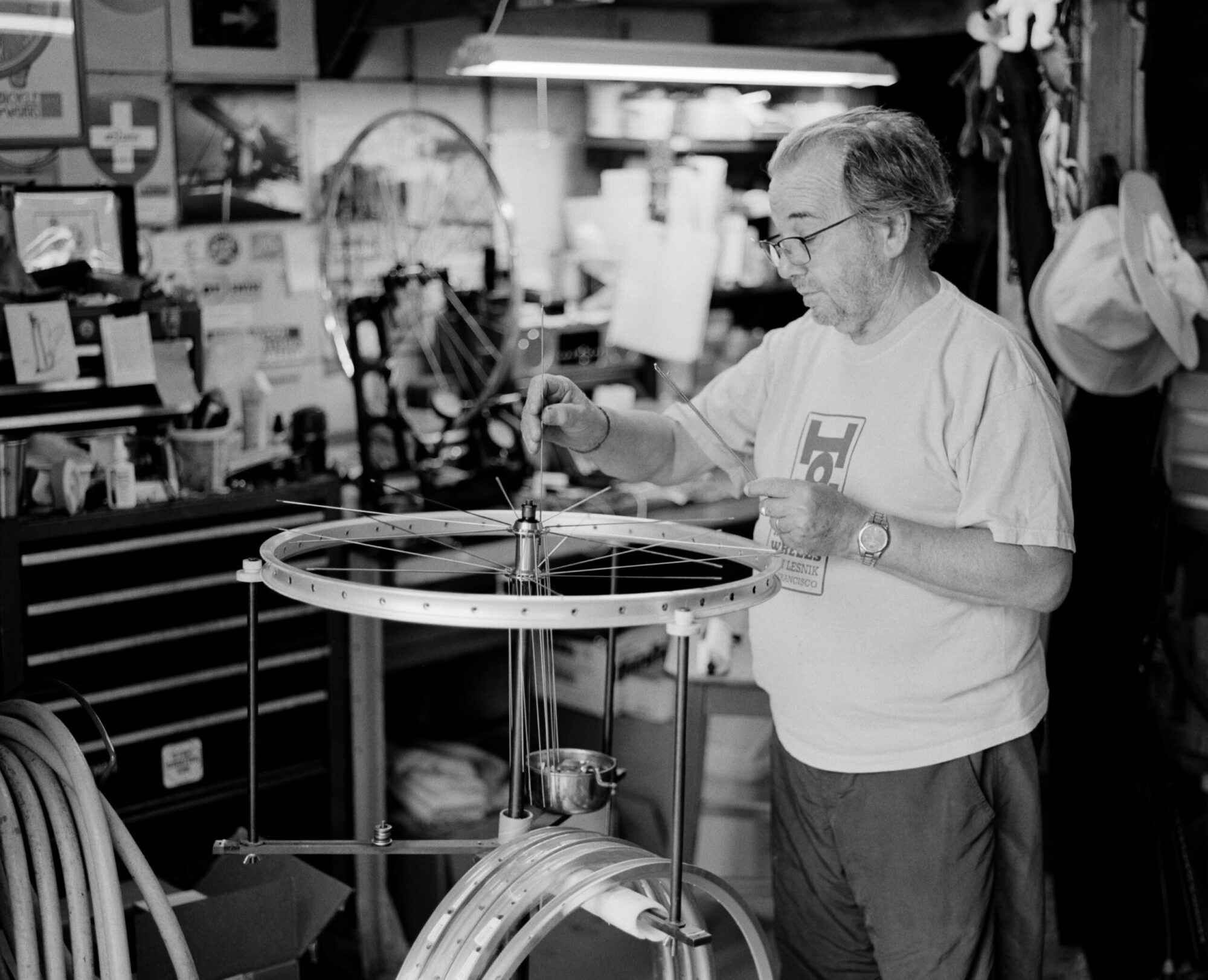
You want the strongest, lightest, most durable structure to support you and your load on the bike. Simple.
Strong
The bicycle wheel is a remarkably delicate structure performing a pretty amazing task: support a human body comfortably, while being subjected to stress from several directions. The main stress is weight. A heavier rider produces more stress, so the rider’s weight must be taken into account when choosing the components of the wheel. Also, how and where you’ll be riding. A “whippet”-like racer riding on smooth roads with skinny high-pressure tires won’t need a wheel designed to survive rough, multi-surfaced terrain with fatter, lower-pressure tires. A rider carrying gear for a camping trip faces unpredictable riding conditions and surfaces and will need a tougher wheel — one designed to survive more and different stress.
Light
The weight of a wheel is determined by the materials used. Today’s ultra-light wheels, influenced by the bike racing culture, use some amazing materials. Most recent weight-saving innovations (fewer spokes, carbon-fiber rims and spokes, ultra-light hubs) compromise strength too much for most riders and conditions in the non-racing world. You’re looking for a wheel that’ll be around for awhile! 32, 36, even 40 or 48 spokes, double-butted and made of stainless steel; brass nipples; a solid, wider rim; a tough hub. These will be plenty light, and — with an expert build — a long-lasting, comfortable wheel.
Durable
Two overall factors determine durability in a bicycle wheel: (1) strength of the individual components and (2) skill, mastery and a “no compomise on quality” attitude on the part of the builder. A heavier (say 200lb) road racer can destroy a poorly-built 32-spoke rear wheel in one strong sprint. A fully-loaded touring bicycle’s wheels will get close to “code red” under the toughest conditions. Spokes need to be set to optimal tension, and that tension must be balanced as closely as possible. Too tight — cracked rim or hub flange. Too loose, broken spokes.
